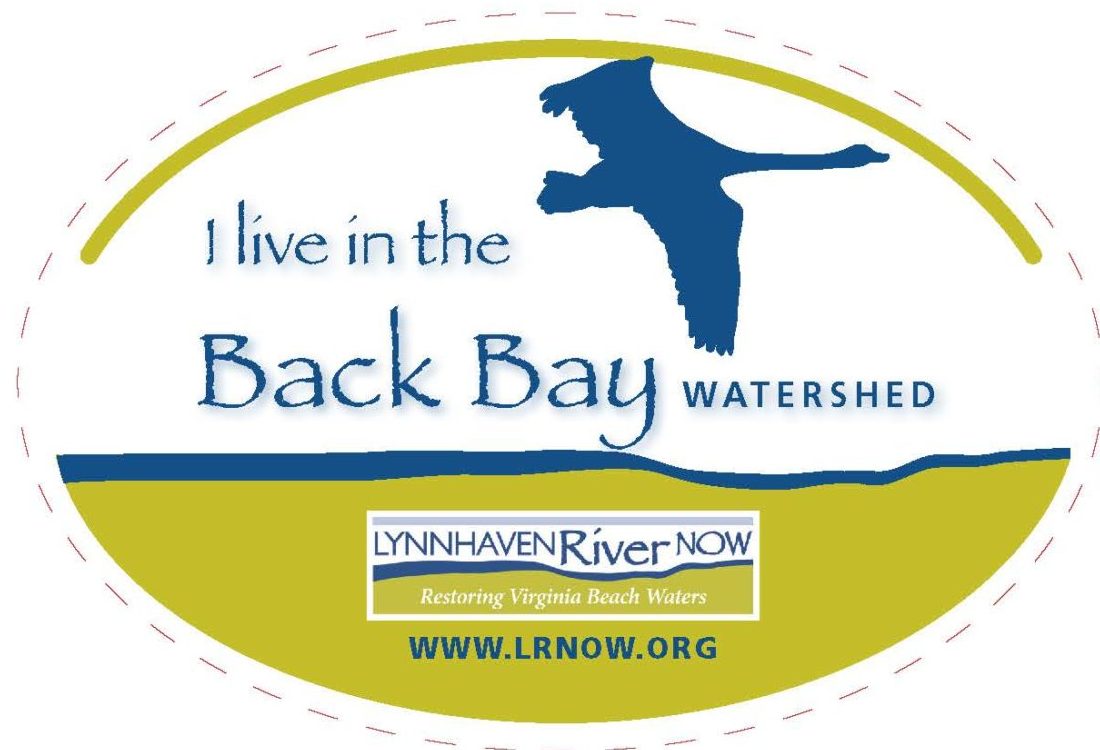Location
- Located in the southeastern quadrant of Virginia Beach.
Size (shoreline and acreage drained)
- 64,907 acres
- 33% of city
- Second largest watershed in VB
Land Use
- Mostly rural
- Mixed with dense suburban in the north, about 25% of area
Topography
- Western edge of the watershed is a ancient beach dune line (Pungo Ridge).
- Princess Anne Road is built on the Ridge.
- Water on the east side of the Pungo Ridge drains to Back Bay.
- Water on the west side of the Pungo Ridge drains to the North Landing River.
% owned by State or Federal
- Federal land ownership: 15.67% of the watershed
- State land ownership: 9.03% of the watershed
Names of Federal or State properties
- Back Bay National Wildlife Refuge (12,290 acres currently with 2800 in Federally approved expansion area)
- Mackay Island National Wildlife Refuge
- United States Coast Guard Communications Area Master Station Atlantic, Pungo Transmitter Site
- Navel Air Station Oceana Dam Neck Annex
- Navel Air Station Oceana
- Princess Anne Wildlife Management Area
- False Cape State Park
Major Bodies of Water & Salinity
- Back Bay- mostly fresh water. Salinity varies with the wind tides.
- Northernmost extension of Currituck Sound
Tides
- Back Bay is generally shallow with a few narrow channels.
- Wind-driven tides often inundate the surrounding low land.
- Wind tides, coupled with storm events, influence the physical conditions of the Bay, including salinity, water clarity and nutrient levels.
Recreation Areas (access points, natural areas, parks)
- Back Bay National Wildlife Refuge
- Little Island City Park
- False Cape State Park
Plants
- Loblolly pine
- American holly
- Live oak
- Bald cypress
- Black gum
- Other hardwood trees
Wetlands
- Back Bay National Wildlife Refuge includes 10 wetland ponds that are managed for wildlife.
- Primary submerged aquatic vegetation is wild celery
Animals
- Back Bay is renowned for its migrating ducks, snow geese, and tundra swans.
- Ospreys, sandpipers, sanderlings, willets, owls, unusual thrushes, warblers, woodpeckers, piping plovers (endangered), bald eagles and brown pelicans (recovering)
- Nesting site for loggerhead, green and kemp’s ridley sea turtles
- White-tail deer
- Bobcats
- Black bears
Soil Characteristics
- Poorly drained soils may occur at low elevations adjacent to Back Bay
Threats
- Fertilizer and animal waste adversely affects aquatic plant and animal communities.
- Unstable ditch and canal banks and eroding marsh areas contribute sediment and nutrients to nearby streams.
- Submerged aquatic vegetation, certain migratory waterfowl and fish have seriously declined.
- Invasive species such as nutria and phragmites.
History
- Back Bay National Wildlife Refuge established June 6, 1938
- The dunes were created by the Civilian Conservation Corps in the 1930s.
- Before that there was no continuous dune line.
- Currituck and Back Bay were used for market hunting and many hunting lodges were built and some still exist.
- Many of the islands were inhabited in the past.
- To become the largest largemouth bass area, the community added pumps to manipulate the salinity of the bay for the fish.
- At low tide you can see the remains of old oyster beds.
- In the past the dunes were over washed during storms. Wash Woods was a community with a church and a school. It had a population of about 300. The community was abandoned in the 1930s.
- Windmills at Dam Neck Mills and Red Mill made use of the wind tides to grind grain.

Do you live in the Back Bay Watershed? Order your FREE sticker today! Email Office@LRNow.org
Don’t know which watershed you live in? Click HERE to discover your watershed.
